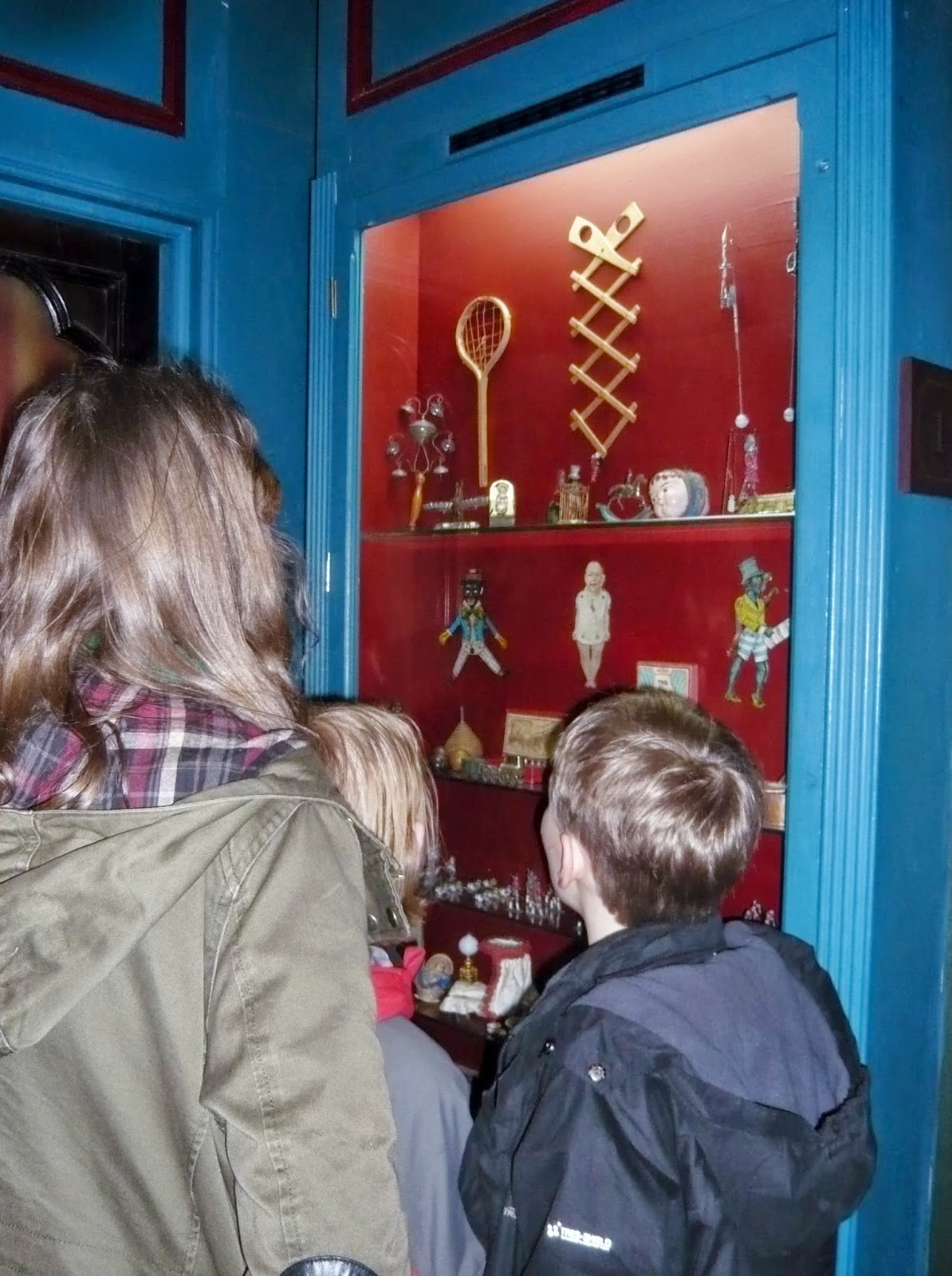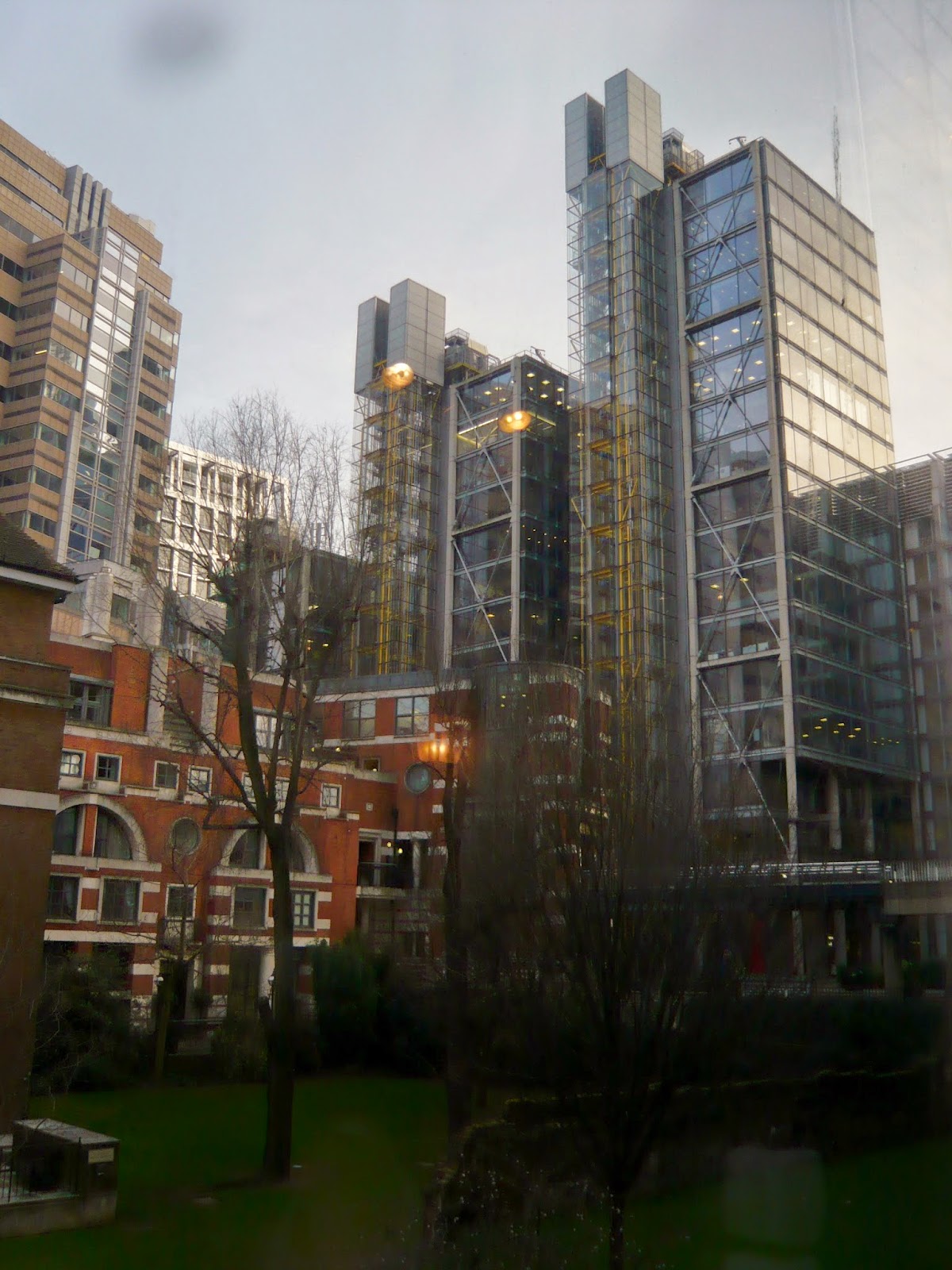With less than a week until Christmas!
You may now have had enough of the shops,
overwhelmed by choice and
perhaps slightly concerned about the cash that seems to be slipping through your fingers.
As an antidote, let me take you shopping
where choice and cash don't feature.
Not window shopping but Victorian shopping at the Museum of London.
Begining with the Toy Shop.
What's on your Christmas list?
Dolls, puzzles, tea-sets, animals two by two?
Whilst out, an opportunity to stop for a quick 'short back & sides' at the Barbers.
Glass-ware.
This would look fabulous on the Christmas table.
Perhaps you should pop into the bank to check your balance,
withdraw cash,
or if need be, have a little chat with the manager?
Cakes and bread,
'shop-bought' in Victorian as well as twenty-first century times.
The grocers.
I seem to have forgotten my list!
A window onto the twenty-first century
from this Victorian street.
Thirsty work, shopping.
Aren't they supposed to be sat outside in the cold waiting for me?
Head to the shops this Christmas,
visit the Victorian Walk at the Museum of London.
visit the Victorian Walk at the Museum of London.
You really won't spend any money, free admission.
More on their website, here.

























